From Vision to Structure: The Architecture and Art of Takkeci İbrahim Agha Mosque
From a dream of hidden treasure to a lasting architectural gem—exploring the artistic and historical significance of Takkeci İbrahim Agha Mosque.
A Vision That Set the Journey in Motion
In a previous chapter of this series, we explored the remarkable dream of Takkeci İbrahim Ağa—a vision that led him on a fateful journey to Baghdad in search of what seemed to be a simple clue: two grapes hanging from a vine. But dreams are rarely what they seem at first glance. If you haven't read the full story yet, you can find it here:
This journey was not just about seeking a treasure—it was about faith, patience, and the realization that sometimes what we seek is closer than we think. And when İbrahim Ağa finally unearthed his hidden fortune, he knew exactly what to do with it.
A Mosque Born from a Dream
Despite his humble means, İbrahim Ağa had long nurtured the dream of building a mosque. With the fortune he uncovered beneath his own home—foretold in the words of a stranger in Baghdad—he saw an opportunity not just for personal gain, but for something greater.
Thus, he dedicated this newfound wealth to the construction of a mosque, one that would not only serve as a place of worship but also stand as a testament to how faith and perseverance can turn dreams into reality.
The mosque, known today as Takkeci İbrahim Ağa Mosque, became more than just a structure of bricks and mortar. It became a symbol of destiny fulfilled, of patience rewarded, and of the mystical connection between dreams and faith.
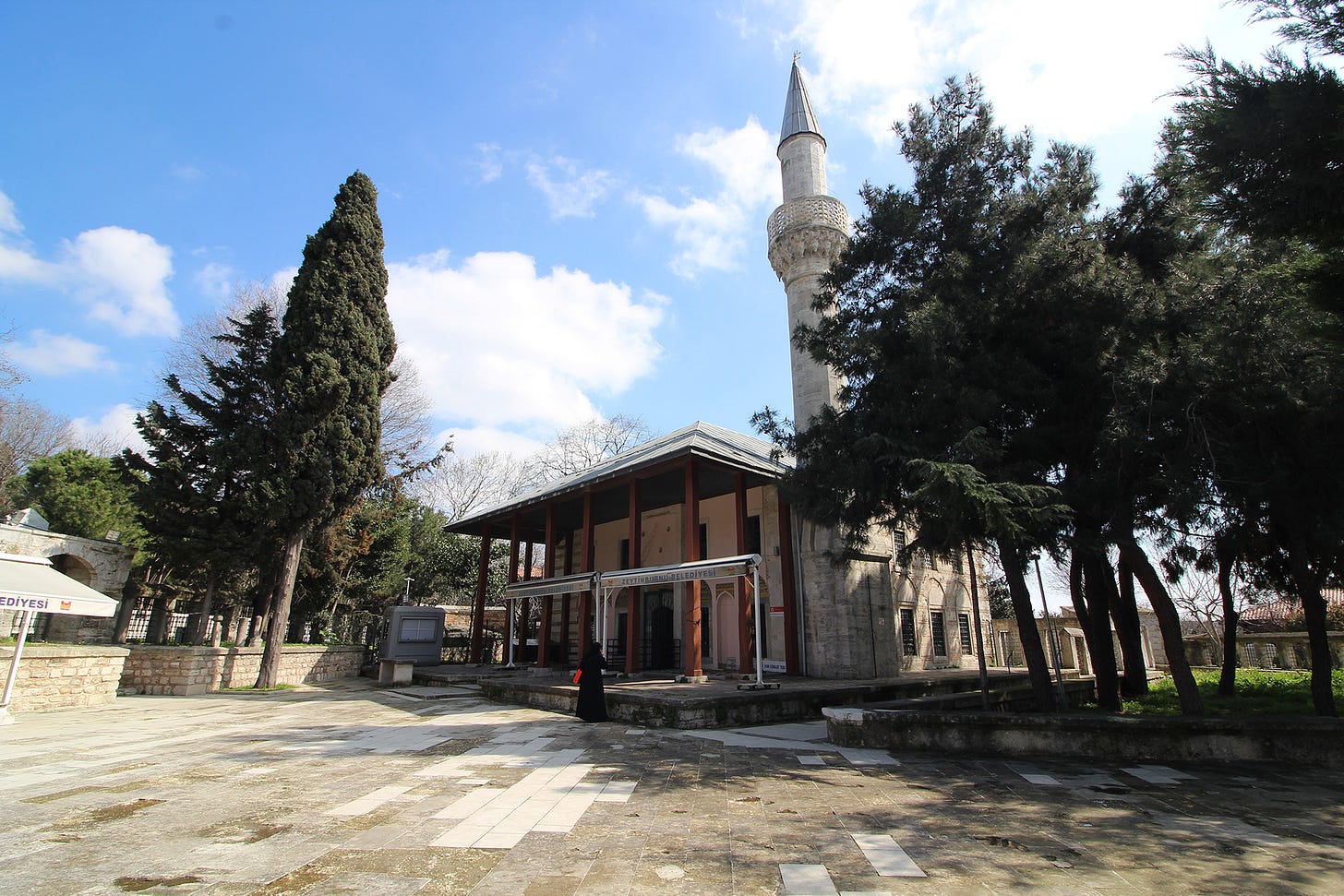
The History and Architecture of Takkeci İbrahim Ağa Mosque
Built in 1592, the Takkeci İbrahim Agha Mosque stands as a special place to its founder's dedication and faith. Located outside the historic Byzantine walls, along the old road to Edirne and across from the Topkapı Cemetery, it was among the first Ottoman structures built beyond the city walls. Initially, the mosque also functioned as a tekke (spiritual lodge) for the Halveti order.
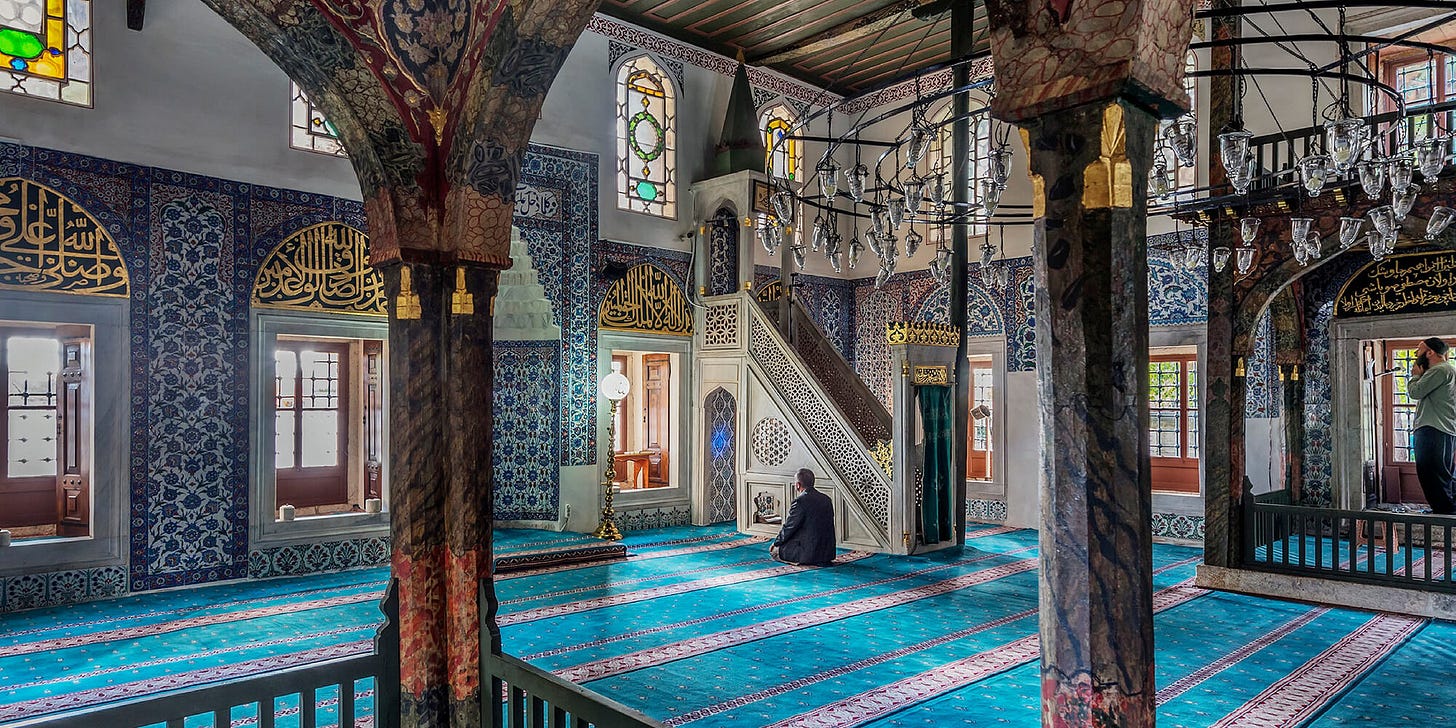
Over the centuries, the mosque underwent several renovations. A significant restoration took place between 1830 and 1831 under the orders of Sultan Mahmud II. However, major urban developments in the 1950s, particularly the construction of the E-5 highway, dramatically altered the mosque's surroundings, severing it from its original neighborhood.
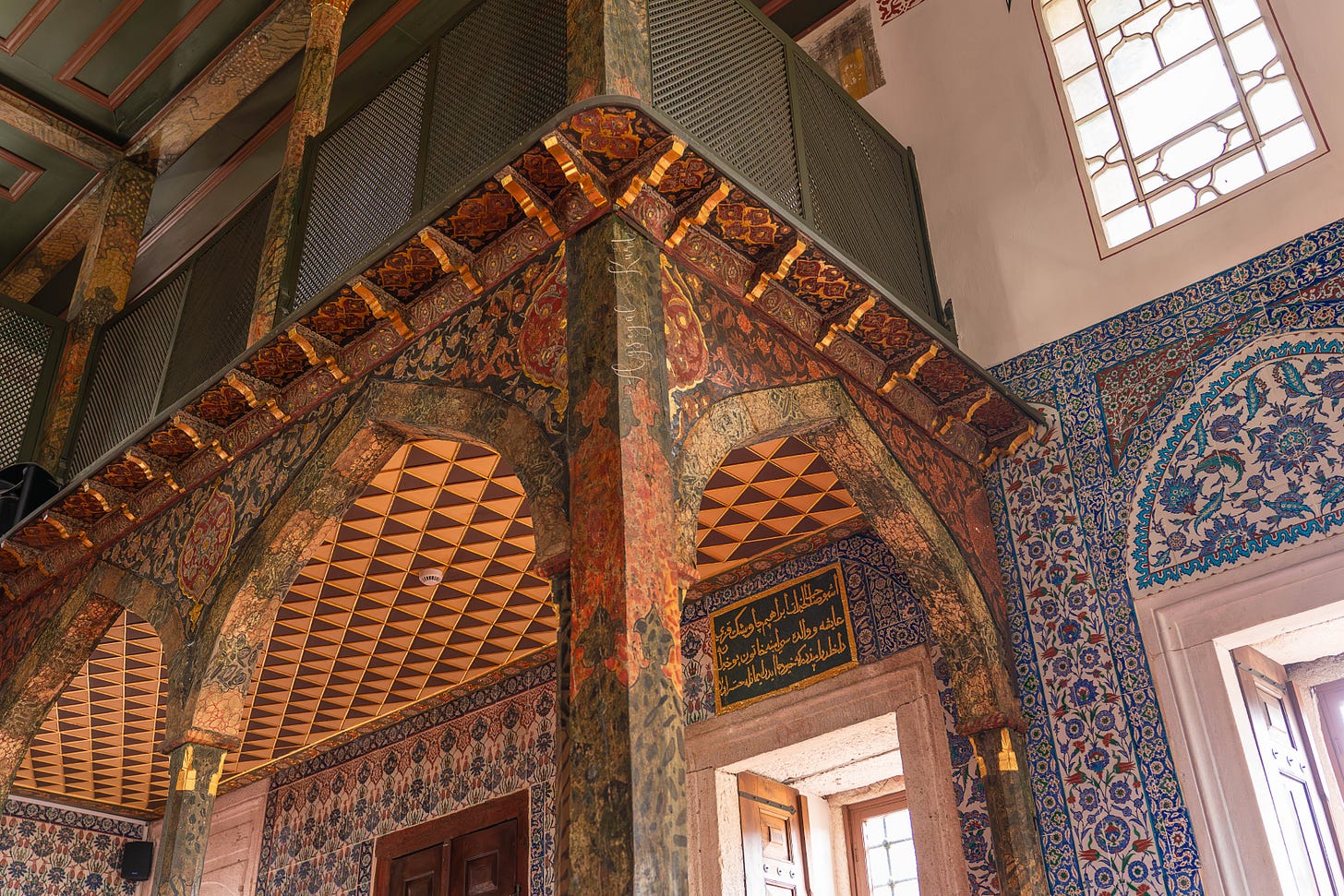
The mosque’s architectural style is simple yet elegant. It features a rectangular layout with a wooden portico and a distinct zigzag-patterned gable roof. The main prayer hall, measuring approximately 11.7 by 11.25 meters, is covered by a small wooden dome at its center. Inside, the mosque is adorned with 16th-century Iznik tiles, distinguished by intricate floral motifs in shades of red, light blue, turquoise, and navy blue against a white background. The finely carved marble minbar and the painted decorations on the wooden balcony highlight the exquisite craftsmanship of the period.
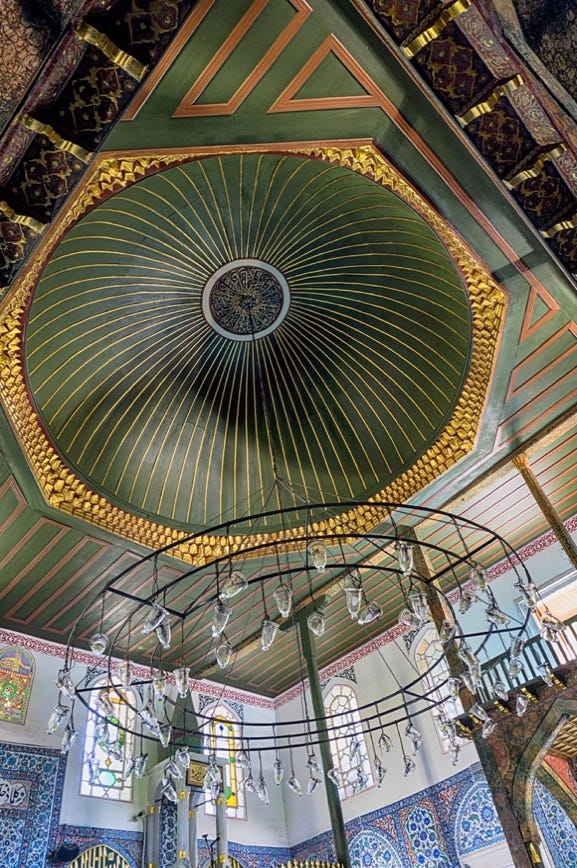
The Iznik Tiles: A Masterpiece of Ottoman Tile Art (Çini)
The mosque’s Iznik tiles, produced using the refined underglaze technique of the late 16th and early 17th centuries, reflect the pinnacle of Ottoman ceramic artistry. The designs incorporate a variety of motifs, including the elegant Sazyolu style, semi-stylized floral arrangements, and the Hatayi pattern. The rich color palette—dominated by cobalt blue, turquoise, red, and green—demonstrates the artistic excellence of the era.
The tiles are meticulously arranged in both band and panel formations, adhering to the Ottoman aesthetic principle of symmetrical balance. This level of precision underscores the broader artistic philosophy of the period, where harmony was a key component of sacred architecture. The mosque’s interplay of floral and arabesque elements is particularly significant, mirroring the artistic trends seen in major imperial structures of the time.
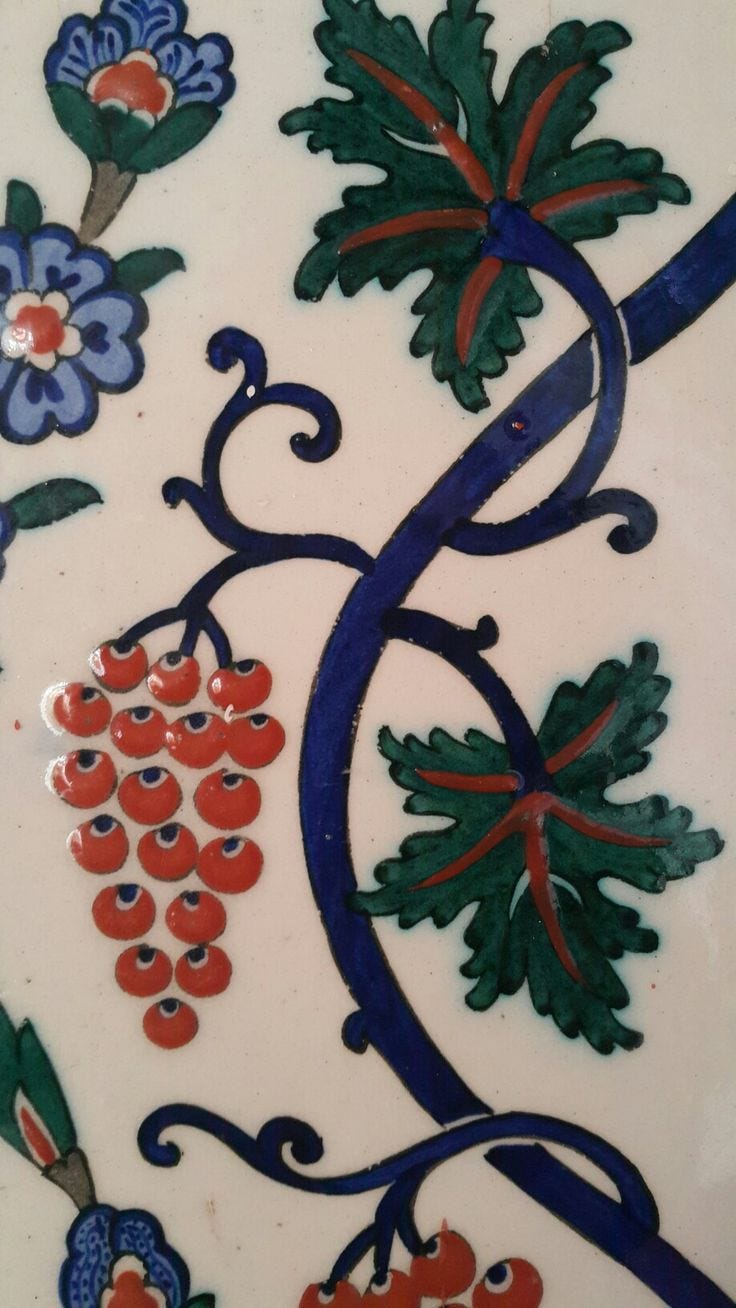
Unfortunately, the mosque’s tiles have suffered due to historical events such as the Balkan Wars and the use of the mosque as a dormitory for war refugees in 1828-1829. These disruptions caused considerable damage, leading to the loss of many original tiles. Some of these artifacts later surfaced in museums and auction houses around the world. Notably, during restorations, Albert Sorlin Dorigny took 40 tiles, and similar ones later appeared at the Gulbenkian Museum and Sotheby’s Auction House.
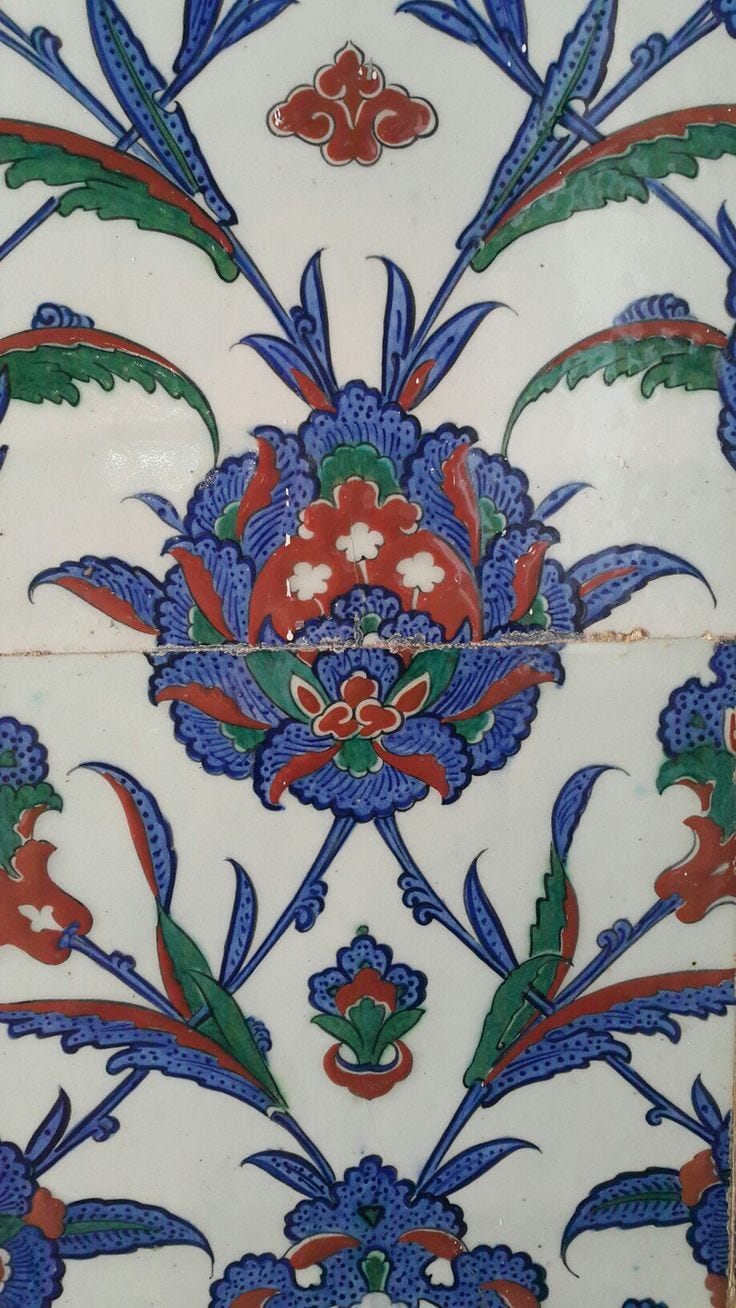
Subsequent restoration efforts have attempted to preserve the mosque’s artistic integrity, but the addition of Kütahya tiles—while aesthetically similar—differs in quality from the original Iznik pieces. Moreover, European-made imitation tiles have also been identified, raising concerns about the authenticity of future preservation efforts.
The Dream Captured in Tiles
One of the most captivating features of the Takkeci İbrahim Ağa Mosque is the inclusion of grape motifs on some of its Iznik tiles. These delicate patterns serve as a direct reference to İbrahim Ağa’s dream, ensuring that his vision was not only remembered but woven into the very fabric of the building. The interplay of faith and art in these tiles reinforces the idea that divine inspiration can manifest in tangible, breathtaking forms.
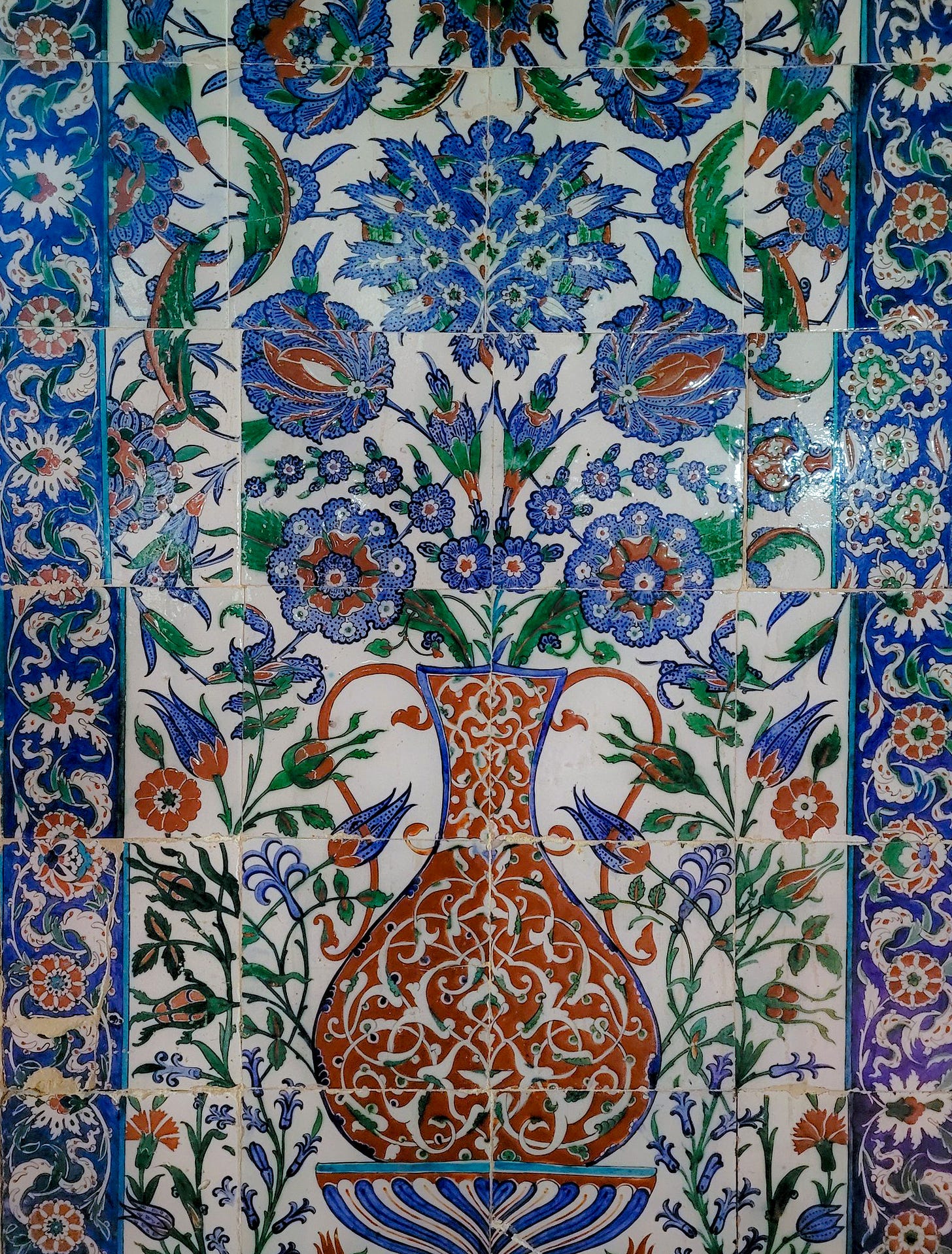
The mosque’s Iznik tiles exhibit the hallmark characteristics of 16th-century Ottoman ceramic art. Rich shades of red, turquoise, navy blue, and light blue dance across a white glaze, creating a mesmerizing effect. These floral and arabesque patterns are not merely decorative—they symbolize divine beauty and spiritual enlightenment, turning the mosque into a space where the ethereal and the earthly merge.
A Legacy of Faith and Perseverance
İbrahim Ağa’s story exemplifies perseverance, spiritual devotion, and trust in divine guidance. His journey from Istanbul to Baghdad and back, motivated by a dream, resulted in the creation of a mosque that remains standing today. The Takkeci İbrahim Ağa Mosque continues to serve as a symbol of unwavering faith and artistic heritage, blending Ottoman architectural tradition with a story that has inspired generations.




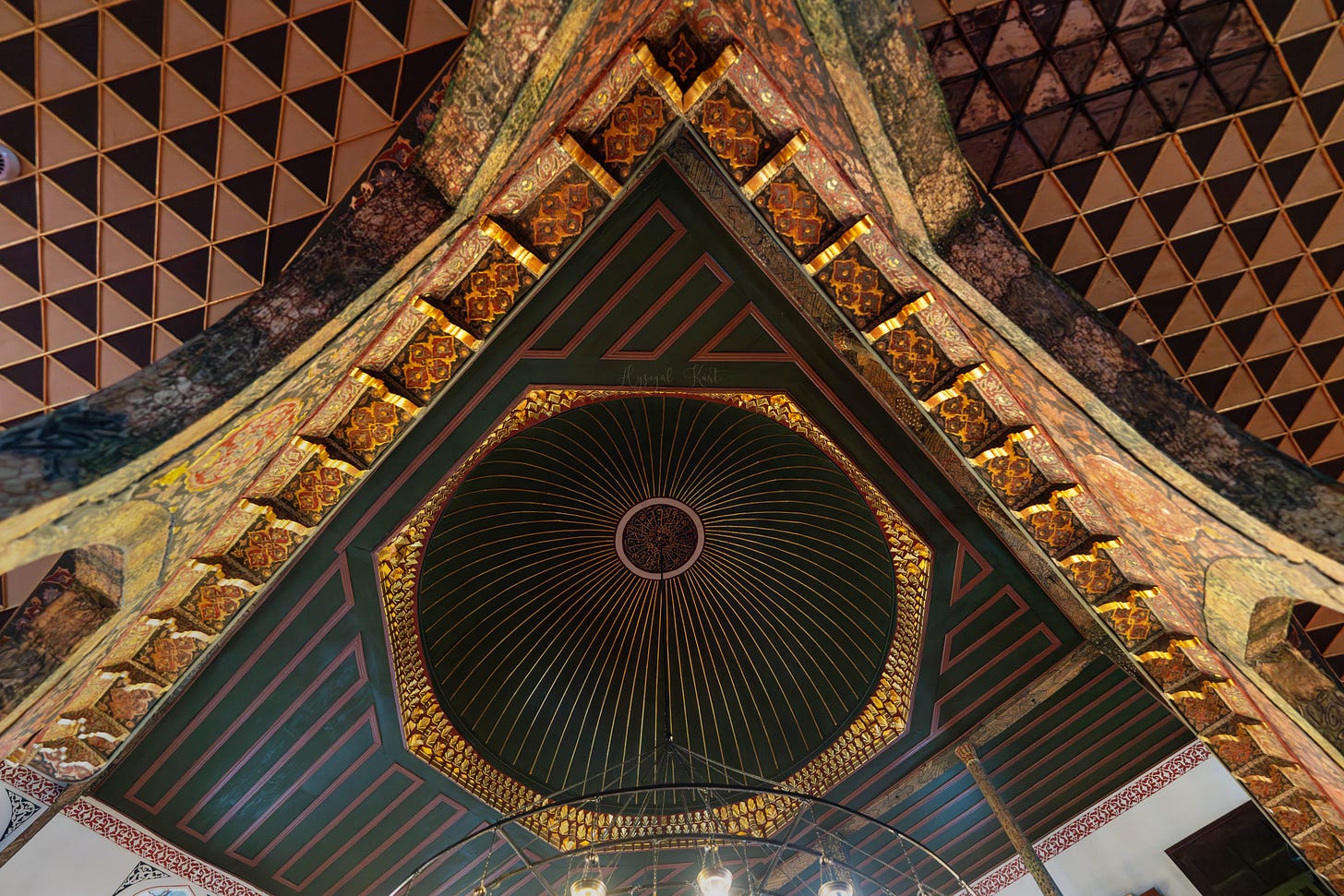
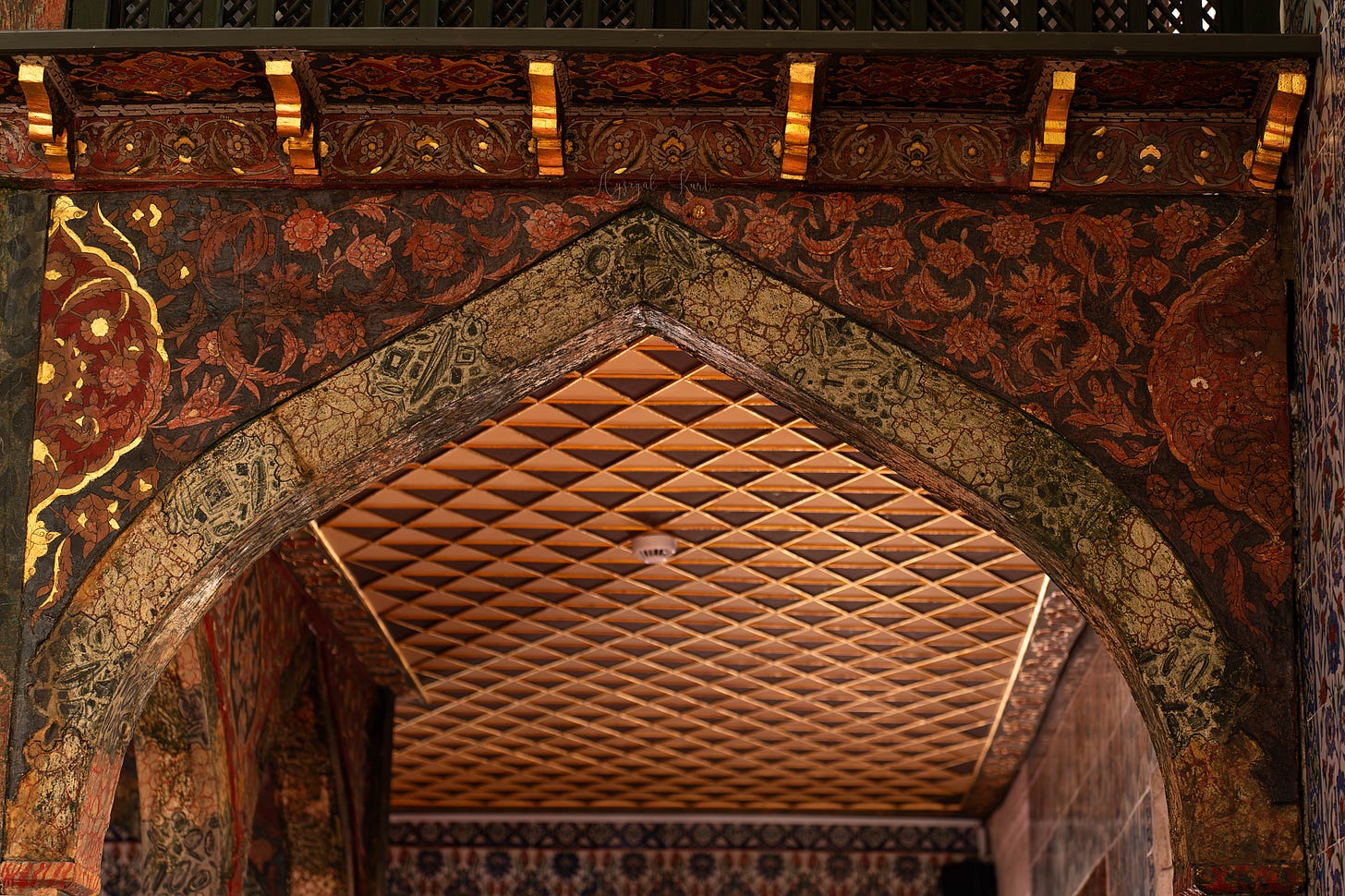
Breathtaking mosque! Thank you for sharing
I’m really enjoying this series. The attention to detail in your writing but also learning about the inspiration and history of the mosque is really interesting.